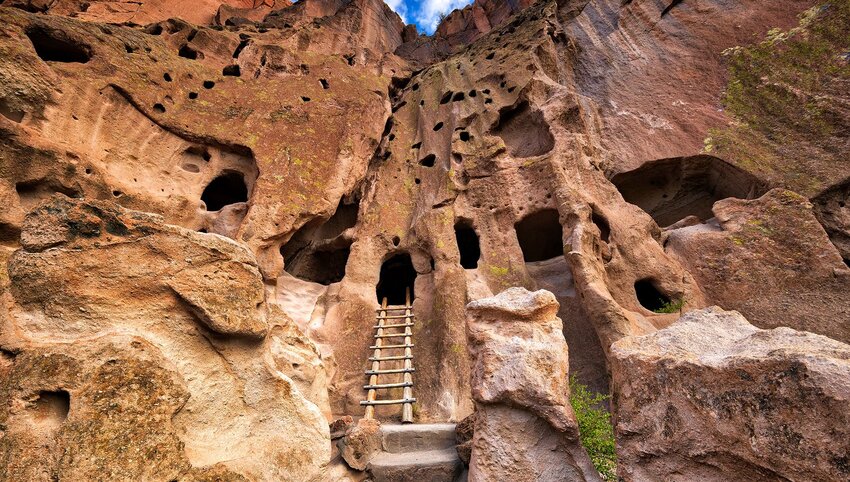Archaeology provides a fascinating window onto the past. Meticulous research and time-consuming excavations coupled with sensitive restoration work allow us to explore how people may have lived centuries ago. There are numerous ancient sites around the world that draw visitors to marvel at the feats of societies long gone, but there are a few fantastic spots to visit right here in North America. From Vikings to Mayans, here are six archaeological sites you can't miss.
L'Anse aux Meadows - Newfoundland, Canada
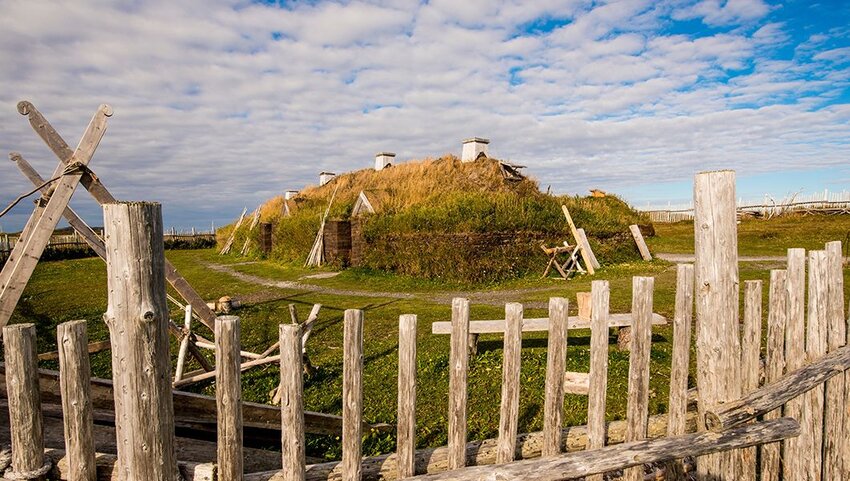
The Vikings came to Newfoundland, Canada around a thousand years ago. And L’Anse aux Meadows near the shore of Epaves Bay in the Strait of Belle Isle, is the place they decided to call home. Archaeologists have uncovered evidence of wood-framed buildings constructed in the traditional Viking way, with turf walls and roof. The site comprises eight buildings that would have formed the first European settlement in North America and is largely complete. It’s clear from what’s been found that these Norse settlers would have been skilled woodworkers; the presence of a forge also suggests that they were proficient at making items from iron too, perhaps to carry out repairs on their ships. It all ties in with the Vinland Sagas, which record the story of Leif Eiriksson’s journey across the Atlantic from Iceland and Greenland.
Writing-on-Stone/Áísínai'pi Provincial Park - Alberta, Canada
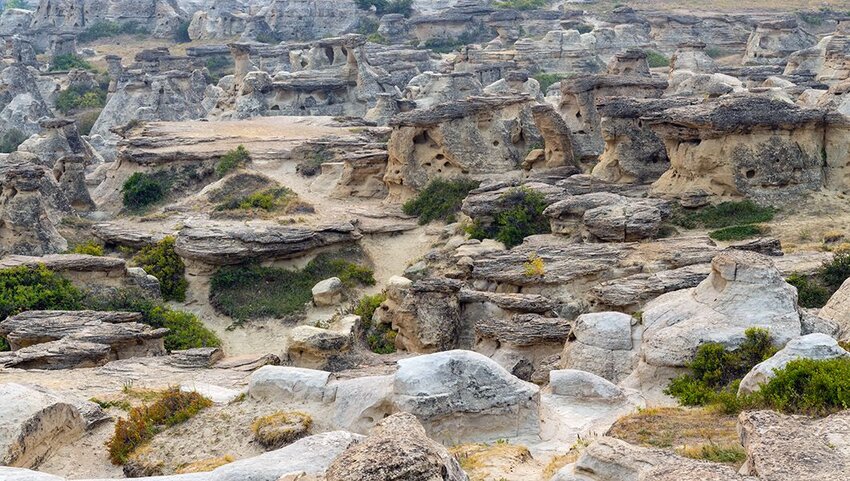
This area of Southern Alberta is a sacred space for the Blackfoot and other Indigenous groups. Archaeological evidence from this site suggests that people first lived here around 3500 to 4500 years ago, though settlement history goes back even further in the wider area. Rock art survives to tell their stories — on the sandstone walls that line the Milk River Valley, there are multiple engravings and paintings, the work of the Blackfoot Confederacy. Park interpreters run themed hikes for visitors keen to learn more about their significance and meaning. Tipi rings and small piles of stones known as cairns have also been identified in the valleys as well as fragments from campsites beside Milk River. Evidence of the presence of bison supports the assumption that these animals were hunted for their meat and fur.
Bandelier National Monument - New Mexico, U.S.
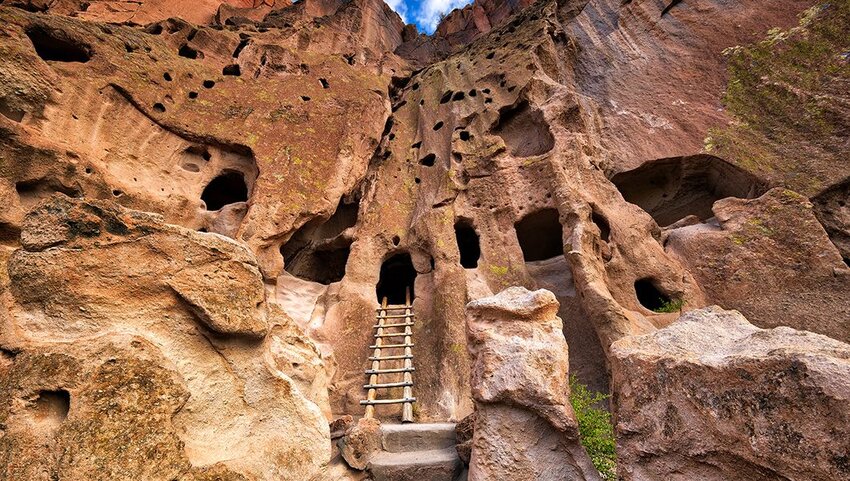
Bandelier National Monument comprises around 33,000 acres of canyon and mesa country a little less than an hour outside Santa Fe, New Mexico. Most visitors flock to a small corner of this protected space to see petroglyphs and ancient dwellings carved out of the cliff face. These were the homes of Ancestral Puebloans and are thought to be almost 900 years old, though nomadic hunter-gatherers inhabited the area long before that. The easy Pueblo Loop Trail winds its way through shady woodland and past many of the caves of Frijoles Canyon. It’s possible to venture inside some of them, though you’ll almost always have to queue before you reach the wooden ladders. Other unmissable sights include the beautiful Falls Trail and a mesa-top walk in the Tsankawi section of the park. In addition, a network of backcountry trails open up the Bandelier Wilderness.
Mesa Verde National Park - Colorado, U.S.
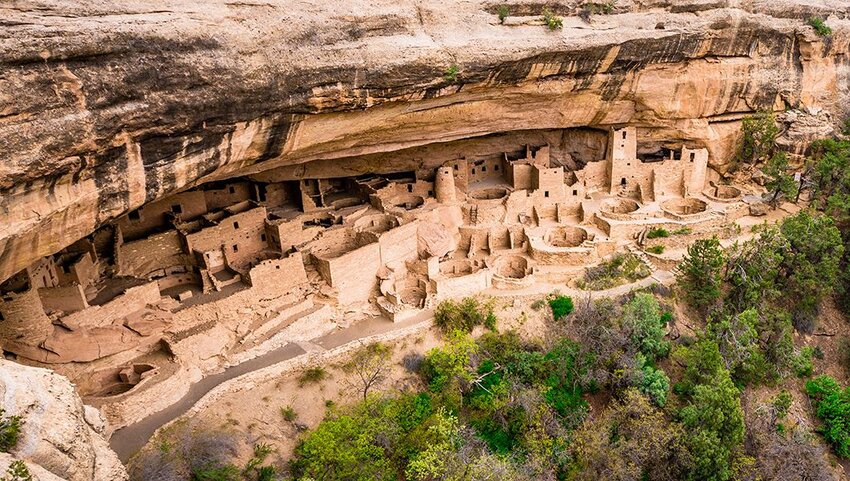
This part of Colorado was first inhabited on a seasonal basis by the Paleoindians many thousands of years ago. Over time, people started to settle and the mesa’s first pueblos were constructed by the Pueblonians after 650 CE. They grew beans, squash, and corn, supplementing their diet by hunting. They were still there in the 12th century, when they built the cliff dwellings that are so admired by today’s visitors. There are more than 600 of these dwellings, including the Cliff Palace, possibly the largest of its kind in the United States and accessible on a ranger-led tour. Other notable features include Balcony House, Long House, Mug House, and Spruce Tree House. Climate catastrophe in the form of prolonged droughts took its toll in the late 13th century. Depopulation was rapid, and the Pueblonians moved out, bound for Arizona and New Mexico. The land became a national park in 1908; since then, ongoing work has stabilised these fragile structures.
Chichén Itzá - Yucatan, Mexico

The most famous of Mexico’s Mayan archaeological sites is unquestionably Chichén Itzá, a UNESCO World Heritage Site. The city was built in two phases; the oldest structures are thought to date from the 6th century. Its star attraction, El Castillo (also known as the Temple of Kukulcán) is a step-pyramid that has cultural, religious, and astronomical significance. At the time of the spring and fall equinoxes, the sun casts triangular shadows on the pyramid and creates the illusion of a serpent slithering to the ground. Other important structures at Chichén Itzá include the Caracol, which is most likely to have been an observatory, and the ball court, which boasts incredible acoustics. There are a slew of other Mayan archaeological sites in this part of Mexico. They include Tulum, Cobá, Ek Balam, Uxmal, and Calakmul; allow plenty of time if you plan to visit them all.
Teotihuacán - Mexico
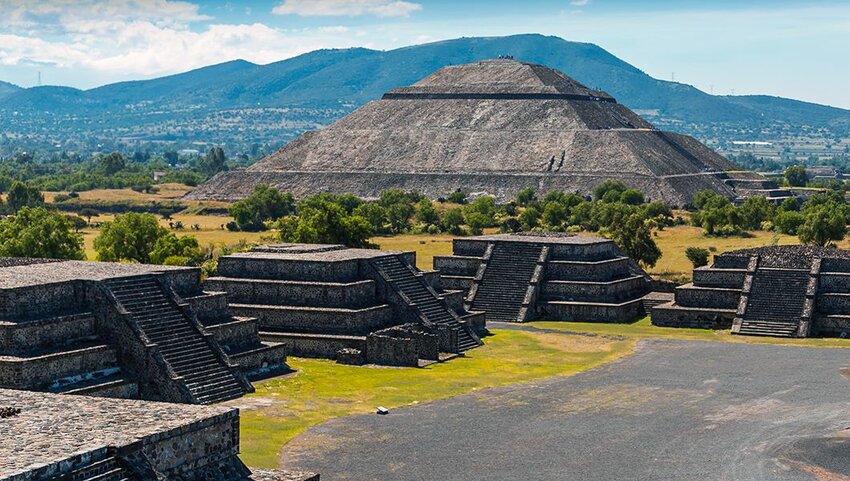
Teotihuacán gets its name from the Aztecs, though the construction of this important ancient city predates their arrival by a thousand years. The earliest settlers occupied the area from about 400 BCE, but by the time the Aztecs showed up it had long been abandoned. Some of the structures have been scorched by flames, and historians believe that the place might have burned down which hastened its decline. The Aztecs revered Teotihuacán, believing it to be the place where the gods created civilization. Today, it’s popular with day-trippers thanks to its proximity to Mexico City. The city was laid out in a large grid and most of what’s accessible to modern-day visitors can be found within a mile or so of the Calzada de los Muertos, an important thoroughfare that would once have been lined with palaces. The main focus, however, are the two great pyramids, the Temple of the Sun and the Temple of the Moon.

